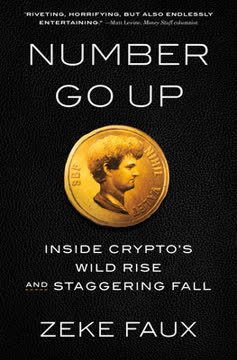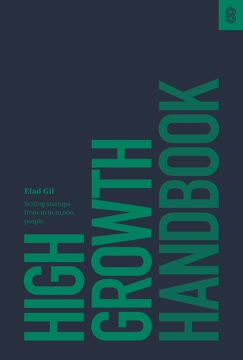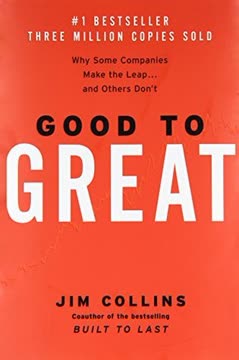Key Takeaways
1. Widen Your View of Talent: Look Beyond Traditional Credentials
"The best assessors in any field look at people differently."
Rethink talent evaluation. Traditional measures like grades, test scores, and job history are no longer sufficient indicators of potential success. Instead, focus on underlying character traits and motivation. Look for candidates who demonstrate curiosity, resilience, and adaptability.
Embrace unconventional backgrounds. Some of the most successful individuals have taken non-traditional paths to success. Consider candidates with diverse experiences and skill sets, as they often bring fresh perspectives and innovative approaches to problem-solving.
Key traits to look for:
- Hunger for learning and growth
- Ability to overcome adversity
- Creativity in problem-solving
- Strong work ethic and determination
2. Decode the Jagged Résumé: Embrace Unconventional Paths
"Compromise on experience; don't compromise on character."
Value character over perfect pedigrees. A jagged résumé often indicates a candidate who has faced challenges and overcome obstacles. These experiences can build resilience, adaptability, and problem-solving skills that are invaluable in the workplace.
Look for transferable skills. Candidates with diverse backgrounds often possess unique skill sets that can be applied in innovative ways. Identify core competencies that align with your organization's needs, even if they were developed in unrelated fields.
Examples of valuable jagged résumé experiences:
- Career changes demonstrating adaptability
- Entrepreneurial ventures showcasing initiative
- Overcoming personal setbacks illustrating resilience
- Unconventional education paths highlighting self-motivation
3. Listen for Talent That Whispers: Discover Hidden Potential
"The world is full of overlooked people, shunned for reasons of geography, status, or background."
Expand your talent search. Look beyond traditional recruiting channels to find hidden gems. Consider candidates from different industries, geographic locations, or educational backgrounds. Often, the most innovative and dedicated employees come from unexpected places.
Create opportunities for talent to emerge. Develop programs or challenges that allow potential candidates to showcase their skills and creativity. This approach can reveal exceptional talent that might be overlooked in traditional hiring processes.
Strategies for uncovering hidden talent:
- Implement open problem-solving challenges
- Engage with online communities in your industry
- Host hackathons or innovation competitions
- Partner with non-traditional educational institutions
4. Ask "What Can Go Right?": Embrace Optimism in Talent Hunting
"Great talent isn't hard to find if you know how to look."
Cultivate a growth mindset. When evaluating candidates, focus on their potential for growth and development rather than solely on their current skills. Look for individuals who demonstrate a willingness to learn and adapt.
Encourage calculated risks. Be willing to take chances on promising candidates who may not meet all traditional criteria. Often, these individuals bring fresh perspectives and drive innovation within organizations.
Questions to ask when evaluating potential:
- How has the candidate demonstrated a capacity for growth?
- What unique experiences or skills could they bring to the role?
- How have they overcome past challenges or setbacks?
- What passion or drive do they exhibit for the field?
5. Take Small Chances to Find Big Wins: The Lottery Ticket Approach
"Figure out how to take tiny chances—so you can take more of them."
Diversify your talent portfolio. Instead of placing all your bets on a few "sure thing" candidates, take multiple small chances on promising individuals. This approach increases the likelihood of discovering exceptional talent while minimizing risk.
Create low-stakes opportunities. Develop internships, short-term projects, or trial periods that allow you to assess candidates in real-world situations without long-term commitments. This approach provides valuable insights into a candidate's potential and fit within your organization.
Examples of low-stakes talent discovery methods:
- Paid internship programs
- Short-term consulting projects
- Hackathons or innovation challenges
- Job shadowing or apprenticeship opportunities
6. Challenge Top Talent: Foster Growth Through Adversity
"Talent wants to be challenged, not coddled."
Create stretch opportunities. High-potential individuals thrive on challenges that push them beyond their comfort zones. Design roles and projects that require continuous learning and growth to keep top talent engaged and motivated.
Embrace productive failure. Encourage calculated risk-taking and view failures as learning opportunities. This approach fosters innovation and resilience in your top performers.
Ways to challenge and develop top talent:
- Assign cross-functional projects
- Provide leadership opportunities
- Encourage continuous learning and skill development
- Offer mentorship and coaching programs
7. Master the Art of Aggressive Listening: Uncover Character Clues
"Aggressive listeners gain authority by being incredibly attentive to other people."
Develop keen observation skills. Pay attention to subtle cues in candidates' behavior, speech patterns, and body language. These details can reveal important insights into their character, motivations, and potential fit within your organization.
Ask probing follow-up questions. Don't settle for surface-level answers. Dig deeper to understand candidates' thought processes, decision-making skills, and core values.
Key areas to focus on during aggressive listening:
- How candidates handle hypothetical challenges
- Their approach to problem-solving and decision-making
- Examples of past behavior in difficult situations
- Their ability to articulate complex ideas clearly
8. Prioritize Character Over Experience: Seek Resilience and Adaptability
"Resilience is prized by Army Special Forces, by Teach For America, and by some leading hedge funds, as they look for portfolio managers who can think calmly in a market meltdown."
Identify core character traits. Focus on qualities like resilience, adaptability, and integrity that are essential for long-term success in any role. These traits are often better predictors of performance than specific technical skills or experience.
Develop character-based interview techniques. Create scenarios and questions that reveal candidates' true character and values. Look for evidence of how they've handled adversity and adapted to change in the past.
Key character traits to assess:
- Resilience in the face of setbacks
- Adaptability to new situations and challenges
- Integrity and ethical decision-making
- Curiosity and continuous learning mindset
9. Conduct Meaningful Auditions: Observe Candidates in Action
"Auditions provide a rare chance to see how a candidate achieves his or her results, not just what gets done."
Design real-world simulations. Create job-specific scenarios that allow candidates to demonstrate their skills and problem-solving abilities in action. This approach provides valuable insights into how candidates perform under pressure and in realistic work situations.
Evaluate soft skills and teamwork. Use group exercises or collaborative projects to assess candidates' interpersonal skills, leadership potential, and ability to work effectively with others.
Elements to include in effective auditions:
- Time-sensitive problem-solving tasks
- Collaborative team projects
- Presentations or pitches to assess communication skills
- Technical assessments relevant to the role
10. Beware of Talent Mirages: Avoid Costly Hiring Mistakes
"Glistening résumés can get caught up in some of the bitterest leadership failures."
Look beyond superficial charm. Don't be swayed by impressive credentials or charismatic personalities alone. Dig deeper to assess candidates' true capabilities, values, and fit within your organization.
Conduct thorough due diligence. Verify candidates' claims and seek input from multiple sources. Use reference checks, background investigations, and structured interviews to build a comprehensive picture of each candidate.
Red flags to watch for in the hiring process:
- Inconsistencies in a candidate's story or background
- Lack of specific examples to support claimed achievements
- Resistance to discussing past failures or challenges
- Poor references or difficulty obtaining references
11. Empower Job Seekers: Navigate the Hidden Job Market
"More than 60 percent of all jobs are filled quietly, without a formal announcement or job posting."
Build a strong network. Cultivate relationships with professionals in your desired field. Attend industry events, join professional associations, and engage with online communities to expand your network and uncover hidden opportunities.
Showcase your skills online. Develop a strong online presence that highlights your expertise and unique value proposition. Use platforms like LinkedIn, personal blogs, or portfolio websites to demonstrate your knowledge and capabilities to potential employers.
Strategies for tapping into the hidden job market:
- Conduct informational interviews with industry professionals
- Volunteer or take on freelance projects to gain experience and connections
- Engage in thought leadership by writing articles or speaking at events
- Leverage alumni networks and professional associations
Last updated:
Review Summary
The Rare Find receives mostly positive reviews for its insightful approach to identifying exceptional talent. Readers appreciate the engaging anecdotes and practical advice on looking beyond conventional hiring methods. Many find it valuable for HR professionals and hiring managers, though some criticize its focus on high-level positions. The book's emphasis on character over experience resonates with readers. While some find the stories more compelling than the actionable advice, most agree it offers a fresh perspective on talent acquisition and assessment.
Similar Books










Download PDF
Download EPUB
.epub digital book format is ideal for reading ebooks on phones, tablets, and e-readers.





